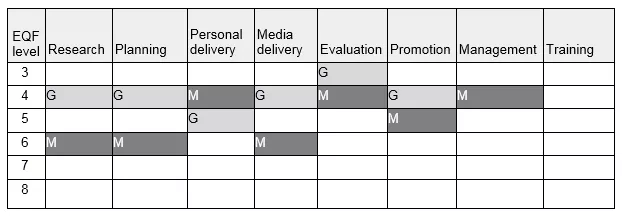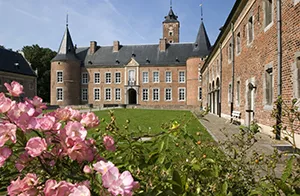Heritage Interpretation: enhancing (adult) learning in heritage contexts


Heritage Interpretation
Heritage interpretation can be seen as a structured approach to non-formal education, specialised in communicating significant ideas about a place to the public. It establishes cognitive and emotional links between visitors and what they can discover at a nature reserve, a historic site or a museum. It reveals deeper meanings, relationships and insights by first-hand experience and by illustrative media, rather than by simple communication of factual information.
Special characteristics of interpretation are:
- Visitors should normally not perceive interpretation as an educational activity but as an interesting and enjoyable service that enhances their heritage experience. Nevertheless heritage interpretation is a ‘structured approach to facilitate learning processes’, which qualifies as an educational activity.
- Interpretation works from the specifics of a site or collection towards more universal ideas by embedding these specifics in meaningful contexts.
- Interpretation also tries to actively involve audiences by relating the content to their personal knowledge, interests, feelings and values and by encouraging discovery, engaging senses and reflection.
InHerit: Professional development in heritage interpretation
In Europe several ten thousands of people are involved in the field of facilitating informal and non-formal learning to visitors at natural and cultural heritage sites, monuments and museums. In many cases guides or curators started with a research oriented academic background in one of the heritage related disciplines such as biology, archaeology etc. and they then learned on the job to communicate heritage to non-experts. They usually are highly respected as experts in the subject matter but often have only little understanding of professional communication principles. This regularly leads to poor quality interpretive products in heritage sites.
Therefore it is high time to focus on the specific qualifications of the professionals in the field of heritage interpretation: what do heritage interpreters offer and what qualifications do they need in order to offer it in a professional way?
The project

In this respect two educational trends were particularly relevant:
- Place-based education & learning: promotes learning that is rooted in what is local, the unique history, environment, culture, economy, literature, and art of a particular place.
- Learning Cities & Regions: a trend to focus on a ‘generative learning ecology & economy’ by locating the learning in more informal, dynamic learning spaces such as work environments, communication media, religious centers, natural recreation spots, heritage and socio-cultural meeting places. Learning Cities stimulate the growth of such learning spaces as well as build the connections between these learning spaces.
A competence profile for the professional field of heritage interpretation
The basis for the creation of a curriculum for heritage interpreters was a reference framework for competences in the professional field of heritage interpretation. This field not only includes those who are employed or self-employed in the sector but also the important group of volunteers who are indispensable for many sites or museums.
InHerit focused on a competence profile and a competence oriented approach because, in the light of Europe 2020, professional development is due to be presented (and recognised) in terms of validated competence development. This is particularly important in a ‘continuous professional development’ context and a non-formal learning context. So if we want professional development in heritage interpretation to be recognised we will have to turn it into competence development. Therefore we started from a competence profile, proficiency levels and indicators. It also means that training courses must facilitate competence development i.e. must be conceived as a competence driven learning activity. This goes along with the fact that heritage interpretation is an applied discipline and the professional training and education of heritage interpreters is best organised in concrete real world contexts.
For the purpose of this profile we defined a competence as a person's ability to perform a particular task or activity in a specified range of real world contexts. In order to become competent an individual needs to acquire a particular combination of knowledge, skills and attitudes (KSA) which is required to perform in the specified context.
We defined areas of competences which are relevant for the professional field of heritage interpretation as a whole, covering all positions related to heritage interpretation. One can distinguish areas of core competences from additional generic competences which, however, are also crucial for the ability to develop and deliver heritage interpretation. Core competence areas in the field of heritage interpretation are: research, conceptualisation & planning, delivery by media and personal delivery. Additional generic competence areas are: evaluation, publicity & promotion, management and training.
In practice an individual does not need to be competent in all these areas. It depends on the specific position an interpreter holds, which competence areas are relevant at what level in order to be able to perform a range of assigned tasks.
In each area the competences are described according to context and qualification level. These levels go along with the descriptors in the European Qualifications Framework (EQF). By referring to this framework, the competences a learner has gained in terms of the ability to perform in certain contexts will be transparent and comparable. Competence oriented qualifications and certificates in the field of heritage interpretation referring to this reference framework will then make it easier for employers to compare candidates in relation to their specific job description regardless in which country the competence has been gained and how the qualification will be called. This competence profile also allows those who develop or offer heritage interpretation training and education to relate their certificates or qualifications to the European Qualification Framework (EQF). It can also be useful to assess an existing programme regarding possible gaps.

This matrix does not link competences to interpretive tasks or jobs/roles but links competences to qualification levels. These competences & levels are building blocks. A certain job/role in a certain context will require a combination of distinguished competences at different levels. This combination can differ according to context but the elements at the level of the building blocks are comparable.
E.g. interpretation staff acting as a local guide (G) is supposed to be competent to develop and deliver interpretation of rather low complexity related to one main subject at one place to be delivered personally. He/she would need a combination of competences in 6 areas at distinguished levels (light grey) as presented in the matrix above. They are competent to autonomously develop simple interpretation programmes / products in the field of their main subject, and to follow guidance from an interpretive plan/master plan.
Media interpretation specialists (M) who are competent to develop and deliver interpretive products (and programmes) for various sites that are related to one major thematic field / one major subject matter would need a different combination (e.g. dark grey). This way the matrix has a universal value and offers a common ground for comparable job description and curriculum development which is exactly the aim of the InHerit project and a starting point for further development of training material and courses.
Guy Tilkin
Guy Tilkin is general manager of Alden Biesen, a magnificent heritage site, an international culture and conference centre and a tourist draw in the province of Limburg, Belgium






